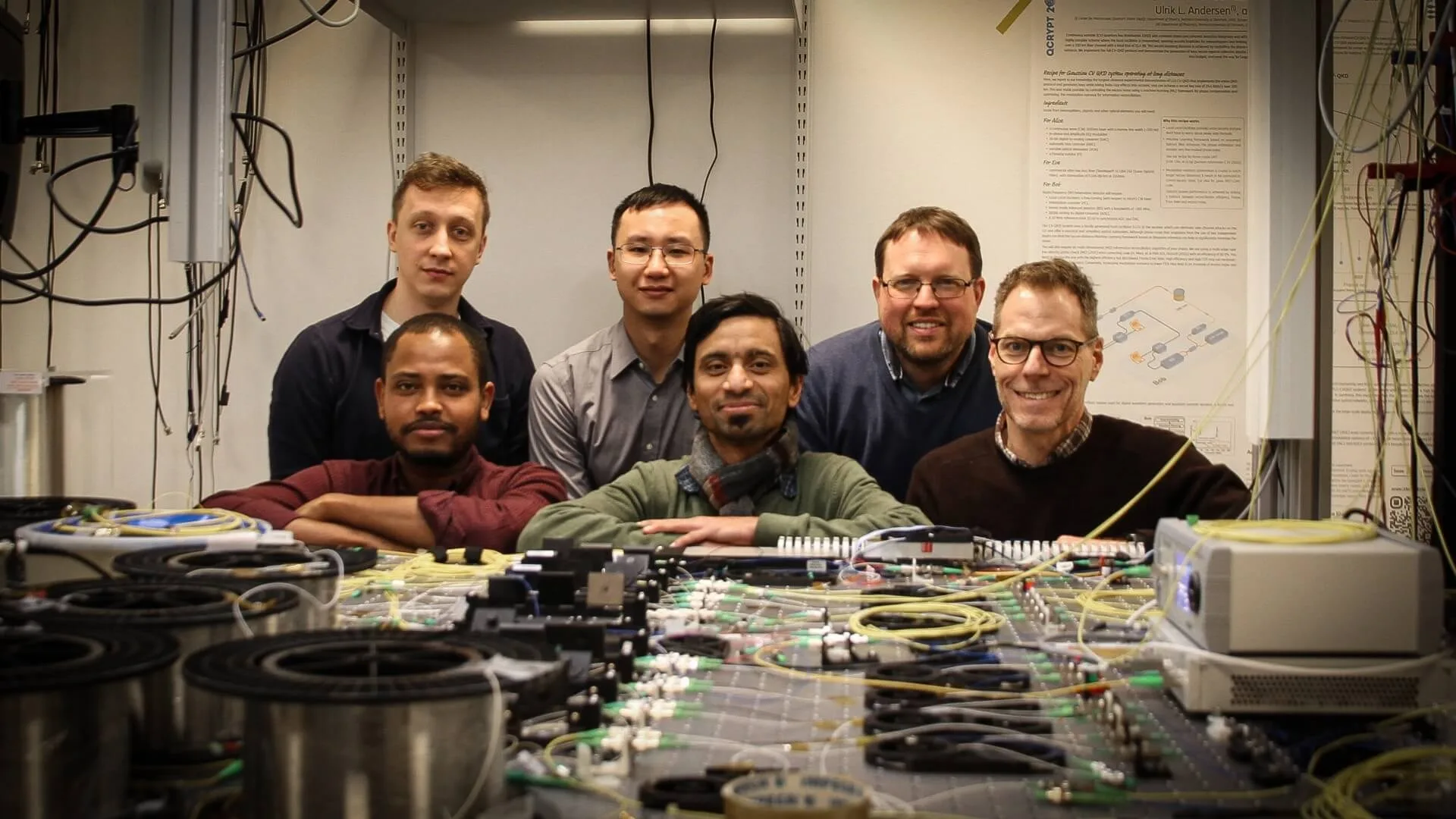Researchers at the Technical University of Denmark (DTU) have successfully used quantum encryption to securely transfer information over a record 100 kilometers via fiber optic cable. The team used method called Continuous Variable Quantum Key Distribution (CV QKD).
This method can be applied to existing internet infrastructure and is seen as a solution to the threat quantum computers pose to current encryption methods. The researchers aim to distribute quantum-encrypted information globally via the internet.
Quantum Encryption: A Leap Towards Secure Information Transfer
Researchers at the Technical University of Denmark (DTU) have made significant strides in the field of quantum encryption, successfully distributing a quantum-secure key over a record distance of 100 kilometers. This achievement, equivalent to the distance between Oxford and London, marks a significant milestone in the use of Continuous Variable Quantum Key Distribution (CV QKD) method.
The Threat of Quantum Computers to Current Encryption Methods
Quantum computers pose a significant threat to algorithm-based encryptions, which currently secure data transfers against eavesdropping and surveillance. While quantum computers are not yet powerful enough to break these encryptions, it is only a matter of time before they can decipher even the most secure algorithms. This potential vulnerability has accelerated the development of new encryption methods based on the principles of quantum physics.
However, one of the challenges of quantum mechanics that researchers must overcome is ensuring consistency over longer distances. Until now, CV QKD has worked best over short distances. The recent experiment conducted by the DTU researchers, published in Science Advances, marks a significant improvement in this area.
The Mechanics of Quantum Key Distribution
Quantum Key Distribution (QKD) is an advanced technology that researchers are working on for crucial exchanges. The technology ensures the exchange of cryptographic keys by using light from quantum mechanical particles called photons. When a sender sends information encoded in photons, the quantum mechanical properties of the photons are exploited to create a unique key for the sender and receiver.
Attempts by others to measure or observe photons in a quantum state will instantly change their state. Therefore, it is physically only possible to measure light by disturbing the signal. This unique property of quantum states ensures that it is not possible to copy the key, protecting critical infrastructure such as health records and the financial sector from being hacked.
Continuous Variable Quantum Key Distribution and its Integration into Existing Infrastructure
CV QKD focuses on measuring the smooth properties of quantum states in photons. The advantage of using this technology is that it can be integrated into the existing internet infrastructure, which primarily relies on optical communication. This communication works by sending data via infrared light running through optical fibers, which function as light guides laid in cables, ensuring we can send data worldwide.
However, CV QKD technology works best over shorter distances. The recent achievement of distributing a quantum-encrypted key over 100 kilometers is a significant step towards increasing this distance.
Overcoming Limitations: Noise, Errors, and the Role of Machine Learning
The researchers succeeded in increasing the distance by addressing three factors that limit their system in exchanging the quantum-encrypted keys over longer distances. Machine learning provided earlier measurements of the disturbances affecting the system, known as noise, which can arise from electromagnetic radiation and can distort or destroy the quantum states being transmitted.
The researchers have also improved their ability to correct errors that can occur along the way, which can be caused by noise, interference, or imperfections in the hardware. In their upcoming work, they plan to use the technology to establish a secure communication network between Danish ministries and generate secret keys between cities to enable companies with branches in both cities to establish quantum-safe communication.
External Link: Click Here For More

